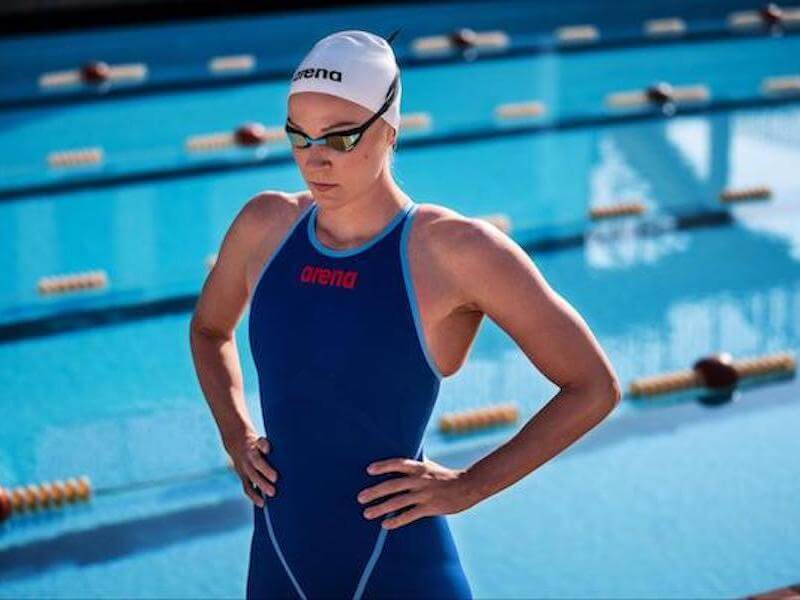Types of Swimming Caps and How to Choose One
Once you put on a swim cap for the first time and feel the added glide in your streamline and throughout your stroke, it’s hard to imagine how you ever swam without one. Swim caps are an essential piece of swimwear for competitive swimmers, but they’re also great for recreational swimmers, especially if you have long hair. There are a few types of swimming caps you can choose from, and we want to help you find the one that works best for you.
This article aims to shed light on some of the benefits you’ll get from wearing any type of swimming cap. Then, we’ll clarify a few misconceptions about swim caps, so you know what they won’t do for you. After that, we’ll explore each type of swim cap, some of the nuanced differences you’ll find in them, and why you might choose one style over another. We’ll also provide some tips on how to care for your cap.
Why Wear a Swim Cap?
Regardless of what type of swimming cap you choose, you’re better off with one than without one. Whether you’re a competitive swimmer or a recreational lap swimmer, a swim cap can increase your performance and improve the comfort of your swim.
The primary reason to wear a swim cap is to reduce drag. Especially if you have longer hair, a swim cap will significantly reduce the amount of drag you experience in the pool. Less resistance means you won’t have to work as hard to move through the water so that you can swim longer and more quickly.
Another reason to wear a swim cap is to improve the comfort of your swim. Your hair can act as a distraction during your swim set. A swimming cap will keep your hair up and in place for your entire training session so you can maintain focus instead of worrying about getting your hair out of your face after every flip turn.
Why Wear a Swim Cap for Open-Water Swimming?
Open-water and triathlon swimmers will want to wear a swim cap for the same reasons mentioned above, but there are additional benefits that make swim caps attractive to open-water swimmers.
First, a swimming cap can keep your head warm in cold water. Any swim cap will keep your head warmer than no swim cap, but a neoprene swim cap is your best bet if warmth is your primary concern. These caps are made from the same material as wetsuits for swimming and will keep your head warm throughout your swim.
The second reason to wear a swim cap out in the ocean or lake is to make yourself more visible. Visibility is essential for open-water swimmers so boaters can see them or in the event they need to be spotted in the water due to an emergency. A colorful swim cap can make you much easier to see out in the water, and luckily, swim caps come in a wide variety of colors for you to choose from.
What a Swim Cap Won’t Do

If you have never worn any type of swimming cap, you might think it protects your ears from water or that it will keep your hair dry. Unfortunately, swim caps are not designed to create a water-tight seal, even though they have a tight fit, so some water can still get under the cap. This means water can still get into your ears, and your hair will still get somewhat wet even with a swim cap.
If you are concerned about water getting in your ears, your best option is to use earplugs like arena’s Swimears. These are designed specifically to keep water out without affecting hearing and balance. If you opt for earplugs, a swim cap can help to keep your earplugs in place.
Types of Swimming Caps
Now that you know the benefits you can get out of wearing a cap, let’s look into each type of swimming cap and why you would want to use it. The differences primarily come down to what type of swim cap materials are used, so let’s see what the differences are.
Silicone Caps
Silicone swim caps are an excellent option for swimmers of all levels. These caps can be used for competition or training. They are durable and won’t lose elasticity over time. Silicone caps are comfortable and mold to your head shape for an excellent fit. These caps tend to be slightly thicker than latex swim caps.
Latex Rubber Caps
Latex swim caps are another excellent option for every swimmer out there. These caps offer many of the same benefits as the silicone swim caps above. They will form to your head for a comfortable fit. These caps tend to be slightly thinner than silicone caps. Some swimmers prefer the feel of a thinner cap, so they choose latex over silicone.
Molded Caps
Molded swim caps are the best option for competitive swimming. These racing caps are molded into a dome shape to ensure no wrinkles form when you put them on. These will give you the greatest hydrodynamic edge during races out of all the swim caps. They can be used in competition or for training.
According to a study, arena’s 3D molded cap accounted for a significant reduction in drag compared to Lycra-style caps and a minor reduction in drag compared to silicone caps. Every little bit of drag reduction makes a big difference during a race.
Lycra/Spandex-Style Caps
Lycra swim caps (or fabric like Lycra) are made of the same material as swimsuits and are a great option for recreational fitness swimmers. arena’s Smart Cap is an example of this type of cap, and it is made with 80% polyamide and 20% elastane. These caps are easy to get on and are very comfortable.
How to Put on a Swimming Cap

Putting on a swim cap takes a little getting used to at first, but it’s not hard once you get the hang of it. Here are some tips for putting on your swim cap.
Start by wetting your hair. Swim caps slide on much easier when your hair is wet. Plus, wetting your hair with fresh, non-chlorinated water before you hop in the pool can protect your hair from chlorine. Your hair can’t absorb more water once it’s already wet, and the snug fit of the cap will prevent most of the chlorinated water from coming into contact with your hair.
Next, if you have long hair, put it up in a bun before putting your cap on. This will keep all your hair out of the way and in place once your cap is on. The arena Smart Cap is a great option as it’s specifically designed for swimmers with long hair.
Now you’re ready to put the cap on. Place both hands inside the cap with your palms facing one another. Spread out your fingertips and pull your hands apart. Don’t be afraid to stretch the cap; it will return to its proper shape. Slide it over your head down to about the bottom of your ears. Adjust the sides here and there, and smooth out any wrinkles. You’re now good to go!
How to Care For Your Cap
Just like your swimsuit, proper care is needed if you want your cap to last, regardless of what type of swimming cap it is. The best way to care for your cap is to rinse it with fresh water to remove any chlorine from the swim cap. Then, you’ll want to let it dry in a cool, dry place before storing it. Avoid storing your cap in any hot areas, like in a swim bag in direct sunlight or in your car.
Grab Your Cap and Head to the Swimming Pool
Selecting a good swimming cap is just as important as choosing the right swim goggles. Whether you’re lapping your local pool for exercise or gearing up for a big competition, a swimming cap will improve your swimming experience. Now that you know the types of swimming caps you can choose from, all you have to do is select the one that works best for you and test it out during your next swim workout.
Need a swimming cap or other swim gear? Visit the arena online store today.
Written by:
Harrison Howarth
Harrison is a freelance writer with a background in competitive aquatic sports. His love for water polo and swim, combined with his passion for writing and education, drives him to continue teaching and inspiring individuals to participate in aquatics.







